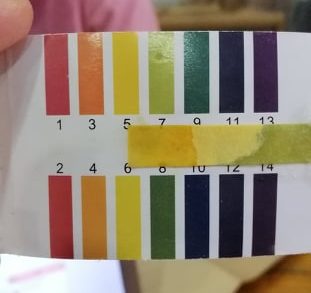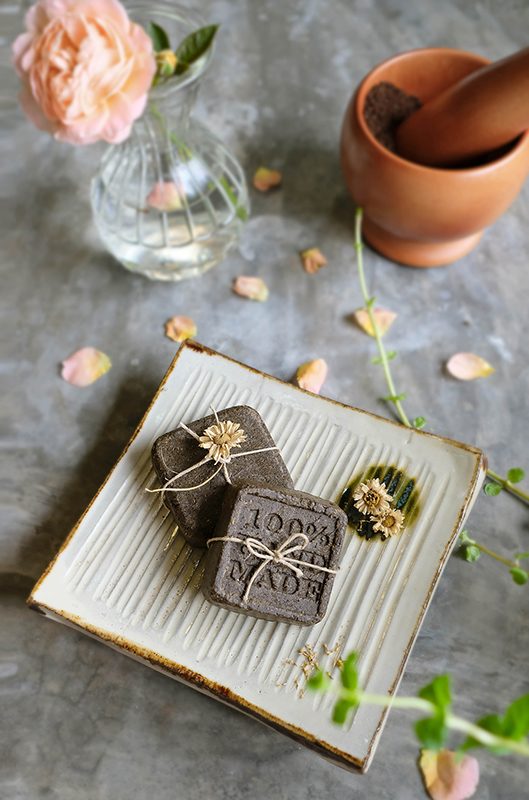We have run No Waste To Go for almost 7 months and been offering many refillable home and body cleaning products except for one that has received numerous inquiries about, shampoo. Which has taken us so long to put shampoo on the shelves regardless of such huge demand? It’s easy enough to find a good sulfate-free shampoo or a zero-waste one, but it’s not so easy to find one that is both.
We have always loved the idea of shampoo bars for these solid, waterless cleansing bars are essentially packaging-free (or they should be) or needing very little packaging to hit shelves. That’s a serious win considering 80 billion plastic bottles go to landfills every year from shampoo and conditioner bottles alone.
But the bad news is that these bars are usually soap which is made by saponifying oils with lye (NaOH, sodium hydroxide). Properly made, soap is one of the best products for body washing, it lathers well, moisturises skin and smells fabulous. But it’s only good for the skin, a.k.a our body since its easily rinsed from the skin and the skin’s natural acid mantle quickly recovers (a combination of your natural skin oils alongside friendly bacteria.)
The downside with soap is the pH. Though none of the lye remains in properly made soap, the resulting soap is usually basic (about a 9) on the pH scale, and there is no way to bring the pH down without compromising soap’s physical structure. Unfortunately, hair reacts to high pH different than skin. When something alkaline (pH above 7) touches the hair shaft, the hair cuticles open and it becomes drier, frizzier, and more prone to damage. On the flip side, acidic products help close the cuticle.

HOW DO WE TACKLE THE PROBLEM?
THE SYN-DET:
In order to make up for this drawback, we have developed our shampoo bars with a different approach: syn-det bar. We use a blend of coconut-derived surfactants (ingredients that make things foam and lather) and soap-berries powder (god-sent natural saponin source) as the main cleaning agents to the make pH of the finished products close that of the skin (5- 6), hence they don’t cause the hair cuticle to open and stick out.

WHAT ELSE?
You might have heard about soap-berries before, it’s a type of fruits that contain natural saponin – a surfactant. Soap nuts and its relative, Albizia Lebbeck (honey locust) are commonly used in Vietnam, the former for washing clothes and dishes and the latter for hair. I grew up washing my hair with the honey locust fruits grilled on charcoal and soaked in warm water. It’s a tradition passed down from old generations when commercial shampoo was scarce in Vietnam. Not only does it clean well, but it also promotes hair growth, restores and balances the sebaceous glands, and combats against dandruff bacteria.

We have incorporated this wonderful ingredient in our shampoo, along with other beneficial herbs like Indian gooseberry, Wild basil, Amla and natural hair conditioning agents: coconut oils and Vitamin B5 that would definitely make your hair happy.

HOW DO I USE A SHAMPOO BAR?
Stroke the solid shampoo down your hair a few times to lather it up, or rub the bar between your hands to create a lather. Gently massage it into the scalp and hair, as you would with a liquid shampoo. Leave the bars out to air dry (on a soap dish with drainage).
HOW MANY WASHES CAN I GET FROM A SHAMPOO BAR?
This is difficult to answer as it depends on how long and thick the hair is, how often the hair is washed and conditioned, how the bars are stored, how many people are using the bars, etc. Typically, approximately 20-25 washes!
Remember that our shampoo bars are totally concentrated shampoo, with minimal water content. With proper use and care, they should last for a loooong time. With the water removed, these concentrated shampoo bars can do the job of a 500-750ml-bottle of commercial liquid shampoo and there is no plastic bottle to throw away afterwards.
SHAMPOO BAR HINTS:
- Keep them dry between uses on a soap dish
- Don’t let your shampoo bar sit in a puddle of water
- Allow shampoo and conditioner bar plenty of fresh air to dry between uses
- If your bar ever gets waterlogged and becomes gooey, simply set it on a draining soap dish for a few days and let it dry out thoroughly
DO SHAMPOO BARS LATHER?
Although it’s true that foamy lather is not necessary for cleaning your hair, most people seem to prefer that a shampoo has lots of lather. As we use a mild blend of natural and natural derived surfactant, our bars won’t produce a super rich lather with loads of fluffy bubbles like commercial liquid shampoo but they still give you enough gentle foams to effectively clean and condition your scalp, leaving hair soft, shiny, clean and, most of all, healthy.


 VI
VI